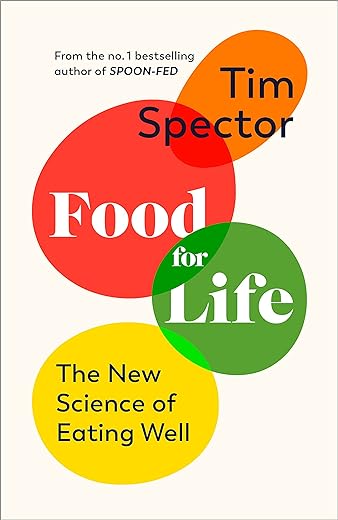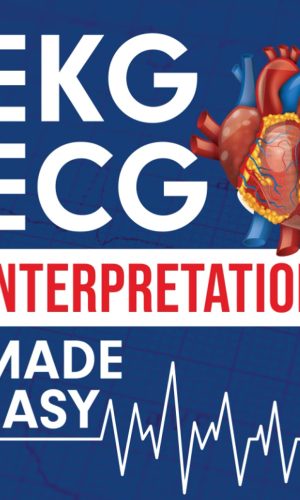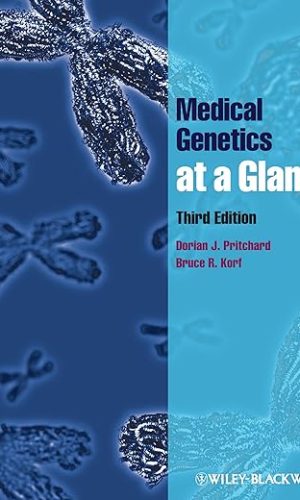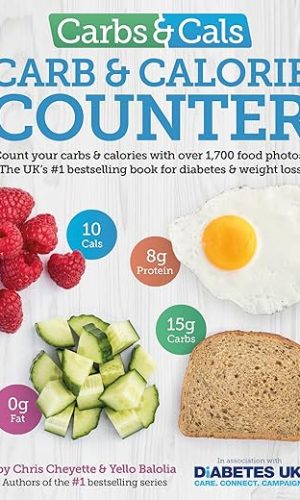Food for Life: The New Science of Eating Well, by the #1 bestselling author of SPOON-FED
£16.40£20.90 (-22%)
‘No fads, no nonsense, just practical, science-based advice on how to eat well’ Daily Mail, Books of the Year
**AS HEARD ON THE DIARY OF A CEO PODCAST**
Food is our greatest ally for good health, but the question of what to eat in the age of ultra-processed food has never seemed so complicated. Bestselling author and scientist Tim Spector offers clear answers in this definitive, easy-to-follow guide to the new science of eating well.
Tim Spector has pioneered a new approach to nutrition, encouraging us to forget misleading calorie counts and nutritional breakdowns. In Food for Life he draws on over a decade of cutting-edge scientific research, along with his own personal insights, to deliver a new and comprehensive approach to what we should all know about food today.
Investigating everything from environmental impact and food fraud to allergies, ultra-processed food and deceptive labelling, Spector also shows us the many wondrous and surprising properties of everyday foods, which scientists are only just beginning to understand.
Empowering and practical, Food for Life is nothing less than a new approach to how to eat – for our health and the health of the planet.
‘Life-changing’ DAVINA McCALL
‘Fascinating’ NIGELLA LAWSON
‘Empowering’ LIZ EARLE
** A THE TIMES and SUNDAY TIMES BOOK OF THE YEAR**
**WINNER OF THE FORTNUM & MASON SPECIAL AWARD**
Read more
Additional information
| Publisher | Jonathan Cape, 1st edition (27 Oct. 2022) |
|---|---|
| Language | English |
| Hardcover | 528 pages |
| ISBN-10 | 1787330494 |
| ISBN-13 | 978-1787330498 |
| Dimensions | 15.24 x 4.57 x 23.5 cm |










by Sarah Griff
Reading about reducing ultra processed food it so important to our future and children’s future health!! Well explained.
by VDK
This book is full of essential information backed up by science. Tim Spector is an expert in the science of nutrition and I think there are a lot of realisation moments in reading this book as you gain understanding of the importance of understanding our own bodies regarding nutrition. If you only read one book on understanding nutrition and health, it should be this one.
by MC
I bought this book following watching some interviews online. I have a therapy background and am very interested in the role of nutrition for health and well-being. The research on the microbiome is fascinating and I know for my own health I have noticed the impact of antibiotics and a diet of ultra-processed foods, So I can take on board the value of a varied diet, wholefoods, fermented foods, minimally processed and locally sourced. For me what spoilt the book was the slightly evangelical and sometimes quite sarcastic presumptuous tone of the author with references to personal opinion, experience and mainstream narrative which were not science based. There are some 13 references to Covid 19 including a somewhat barbed opinion on those who chose not to take a vaccine. Regular references to what is ‘good for the planet’ from the consumption of dairy to how to cook pasta neither of which have the impact as say someone who regularly flies round the world to research their books or promote their company?!? The presumptions that everyone some day will be wearing a glucose monitor are unlikely. I personally wouldn’t want to find myself being obsessive enough to be whacking my smartphone on my arm to see if what I had eaten had given me a glucose spike. The science is ever changing which is great and interesting but I feel for myself it is important to be very intuitive about what works and what doesn’t. So to answer my original question. No this is not a book just about nutrition; it is also to promote a product; a privileged lifestyle unavailable to most of us and to virtual signal about what is allegedly going to save us from viruses and climate change. There are pages and pages of tables, references , glossary and index. Speaking personally if the book had just stuck to the nutritional findings it would have been more useful.
by Steve Webb
I would strongly recommend buying this book, although I felt a few things were questionable.
We know people in the UK do not get enough vitamin D from sunshine in the winter, which is a serious problem. This book suggests on pages 232,233 getting your vit D supply from mushrooms that are fed on daylight but it does not state how much vitamin D/day is required. The only daylight fed mushrooms in my local Yorkshire supermarkets are Chestnut mushrooms which only have 200 IU per 100 grams which is not enough to meet even the UK Department of Health and Social Care standards of 400 IU/day.
The USA standards I feel are a bit more realistic of 600 IU and over the age of 70 (which I am) of 800 IU. I like to keep my Vit D at high optimum levels (i.e. 125 – 200 nmol/L in the blood – UK units not USA) so I supplement my food with vit D3 capsules which are essential for many reasons. In the winter my vit D3 capsule intake is 4,000 IUs per day plus vit K2 (200 micrograms). Very high vit D dosage can be toxic so I have been monitoring my levels for the last 10 years.
The book says “eating two portions of fish per week is not needed for health”. The body requires high amounts of EPA and DHA (omega 3 acids). Foods that have high levels of EPA and DHA are mainly from fish, algae and some meat products. Being a pescatarian, I cannot get EPA, DHA or vitamin D from organic meat.
Although some plant foods (e.g. walnuts) have high levels of ALA which can be converted by the body into EPA and DHA the converted amounts are very small indeed. Only about 8% of ALA is converted to EPA, and about 4% is converted to DHA. ALA is also a form of omega-3 and is a life saving nutrient in its own right.
The NHS recommends 500 milligrams of EPA and DHA per day. The American Heart Association recommends 6 ounces (i.e. 170 grams) of fatty fish/week e.g. mackerel has 9 grams of EPA and DHA i.e. 1,285 milligrams per day. More recently the paper “The influence of dietary and supplemental omega-3 fatty acids on the omega-3 index: A scoping review” suggests 1,000 to 1,500 milligrams of EPA plus DHA as triglycerides (e.g. fish, good supplements) daily for at least 12 weeks to get to an optimal level for reduced risk of chronic disease, most notably cardiovascular disease. However there is some evidence that DHA is not good for your heart whereas EPA is good – so do your own research to decide what is best.
Getting high sugar spikes can be a very serious health problem. The book does not stress enough the importance of exercise after a meal which significantly reduces the intensity of these sugar spikes.
The book notes section is fairly up to date i.e. 2022 references. So I was surprised it did not mention the 2020 paper “Associations of fat and carbohydrate intake with cardiovascular disease and mortality: prospective cohort study of UK Biobank participants” that shows the optimal amount of macronutrients of sugar, starch, fibre, different type of fats and protein. Most people have too much omega-6, which can increase inflammation and disease, and not enough omega-3. Ideally need 2:1 ratio of omega-6:omega3.
Also on the theme what is the optimal amount of macronutrients, I did not see a reference to the 2017 paper “Food groups and risk of all-cause mortality: A systematic review and meta-analysis of prospective studies”. This paper shows the optimal amount of whole grains, refined grains, vegetables, fruit, nuts, legumes, eggs, dairy and fish per day. For heart and stroke issues, the diet needs to be slightly different, e.g. paper “Food groups and risk of coronary heart disease, stroke and heart failure: A systematic review and dose-response meta-analysis of prospective studies”. Also the 2022 paper “Estimating impact of food choices on life expectancy: A modeling study” is well worth looking at.
Getting the right amount of macronutrients is a serious issue. I would have found it useful if the book had given examples of what an optimal diet would look like per day for a week. Its needs to be at least a week because each day there will be different amounts of macronutrients. For example Day 1: 400 grams of vegetables (1 big tomato, 1 sweet pepper, mixed salad leaves, sauerkraut, kimchi, half avocado, small bowl of vegetable soup); 200 grams of legumes (big cup of beans, lentils, peas); fruits 300 grams (1 apple, banana, handful of berries); whole grains 100 grams (1 whole wheat sourdough slice, bowl of whole oat grains); 1 handful of walnuts (30 grams); 20 grams of seeds (flax seed, chia seed); 100 grams of Kefir; 20 grams feta cheese, 100 grams of oily fish (e.g. sardines); 30 grams of plant oil (e.g. at least 2 tablespoons of extra virgin olive oil); organic milk for tea and coffee. Day 2: …..etc,…. Note that below the age of 65, protein intake should be low but higher after that age. Certain of the above foods may give you a high sugar spike because of your glycemic response.
A number of assertions made in the book are not backed up by any references. This means doing your own studying to check if the book is correct or not, or deciding it’s not proven.
by Anthony G
There are a lot of myths around about what is or isn’t healthy to eat. What makes this book different is that it is firmly based on the science. The author is a respected academic who has made the topic of nutrition and the microbiome much more accessible.
by Katie W
Evidence based informative text about the food we eat today and what we can eat to improve our wellbeing and what we can avoid to improve our health and contribute to improving the chance of our planets survival
by Amazon Customer
Bought this as gift for a friend who is about to have a hip replacement op and wants to make some lifestyle changes. She’s found it helpful and is already implementing some of its sage advice. It was a very welcomes gift indeed!
by Danni D
Speaks so much sense and so thought provoking. Hope the government end up following similar approach rather than the utter BS thats led to the obesity pandemic we now have. Would recommend